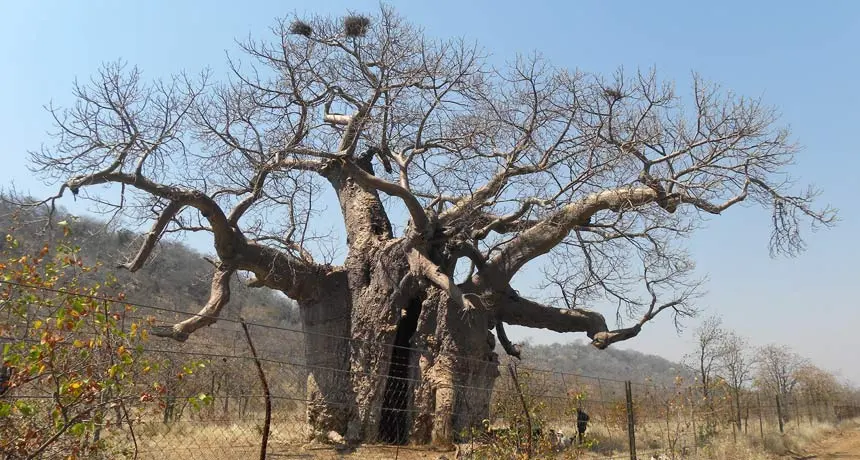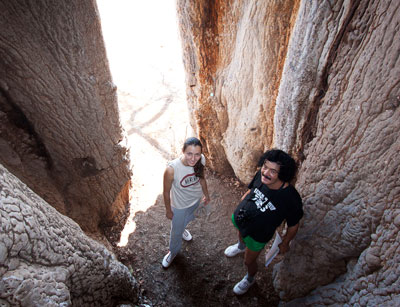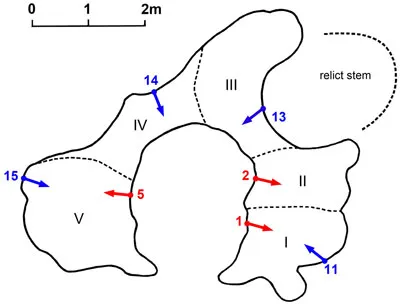Huge, hollow baobab trees are actually multiple fused stems

This hollow baobab tree, located on the Mozambique border, is actually composed of several fused stems, a new study finds.
Roxana Patrut/A. Patrut et al/PLOS ONE 2015 (CC-BY 4.0)
- More than 2 years ago
The baobab is one the most iconic African trees. The species, Adansonia digitata, is widespread across the continent, and its fruit is an important traditional food. The trees are huge, often growing to many meters in girth. Scientists have difficulty determining the age of these behemoths, though — they stop forming rings and often have large, hollow interiors. The only way to figure out a tree’s age is through radiocarbon dating.
In 2005, Adrian Patrut of Babeş-Bolyai University in Cluj-Napoca, Romania, and colleagues began an investigation into the age of a large baobab located along the Lebombo Eco Trail in Mozambique, near the border with South Africa. The tree had a circumference of 21.44 meters and an inner cavity, lined with bark, that was large enough to hold several people. The researchers took several small samples from various places on the tree’s exterior and within the cavity, each time being careful to disinfect and seal the holes to prevent infection. They then used radiocarbon dating to determine the age of various parts of the tree. The results of their study appear January 26 in PLOS ONE.

The baobab, though, had a curious age pattern: The youngest wood was found both on the outside of the tree and right next to the hollow center. “The only explanation for this anomaly, which represents a reproducible experimental finding, is that such inner cavities are in fact natural empty spaces between fused stems disposed in a closed ring-shaped structure,” the researchers write. “We named them false cavities.”
The Lebombo baobab, they discovered, was actually composed of five fused stems, and they found evidence that a sixth had also once existed. The oldest part of the tree was 1,355 years old, and the youngest stem was a meager 900 years old. In the hundred or so years after that youngest stem began growing, the stems fused together, forming the false cavity, which itself reached its current size and stopped growing about 500 years ago.

Young trees, the researchers note, are usually single-stemmed. But as the trees grow, they produce new stems from roots or fallen stems. And over time, those stems grow and fuse with the older ones, producing the mammoth trees now found across Africa.







